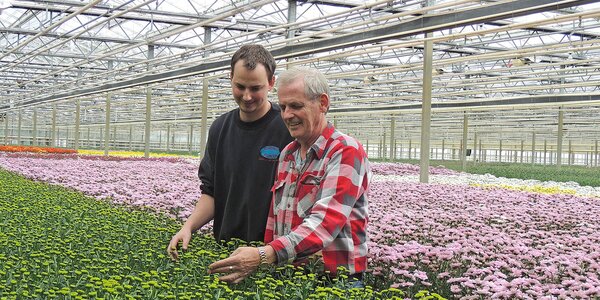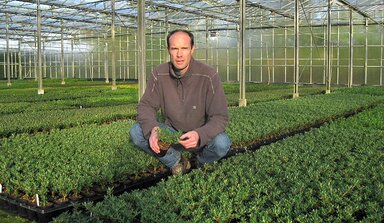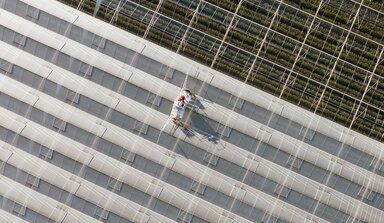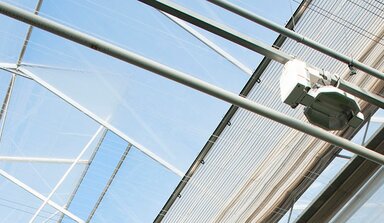ReduHeat and chrysanthemums
Chrysanthemums have a hard time growing at very high temperatures. Out of curiosity Chrysco Flowers of Cranbourne (near Melbourne) decided to try ReduHeat. The coating has been good on all fronts: Better quality; higher production; and a more pleasant working climate.
Up until the season of 2013/2014 Cor and Scott Slykerman (father and son) didn’t use any coating to avoid the summer heat. They grow many different types of chrysanthemum under two hectares of glass and use fixed screens in order to control the greenhouse climate. “If you don’t shade chrysanthemums the quality of the flowers drops. The stems can become too woody and too thin. Above 30oC the plant has a lot of difficulty and you run into problems with production,” says the father. “Actually it was out of curiosity that we tried ReduHeat this season. We applied it using a helicopter around 1 November and removed it around 1 March. It stayed on well and was easy to remove with ReduClean,” he says.

Cor and Scott Slykerman
Higher production, better quality
Based on advice and the positive experiences of growers in warm regions – similar to South East Australia – they wanted at least to give it a try. The expectation was a better quality and that has indeed been the result. “The crop was less stressed and you see that in terms of production and quality. Both are at a higher level than previously. You see that the flowers are sharper and have a better colour.”
Also, there is more certainty regarding production. Any large peaks in plant temperature are subdued so there is less chance of stress and damage from light. “By using the coating, production is more easygoing. The extremes in radiation and temperature are reduced,” says Slykerman. “In addition, it is a lot more pleasant to work under ReduHeat.”
Moister growing climate
Measurements taken in the greenhouse confirm that the temperature is lower than previously, when there was no coating. Also, the air humidity can be maintained at a higher level for longer because the windows don’t need to be opened so quickly. This is also good for the maintenance of the CO2-level in the greenhouse. The sum total of favourable temperatures, higher humidity and higher CO2 content explains the higher productivity and quality. Also noticeable were the fewer problems caused by infestation of thrips.
Very satisfied after the pilot year
Slykerman is very satisfied about the first year with ReduHeat. The only minor disadvantage could be the low light loss under the coating, but that is dwarfed by the benefits. He wants to use a coating again next year. That will probably be partly ReduHeat and partly ReduFuse IR, which he’ll run as a trial. ReduFuse IR also reflects the heat out of the greenhouse and at the same time makes the light diffuse, so that it further penetrates into the crop. That can have an additional positive effect on production and quality.


